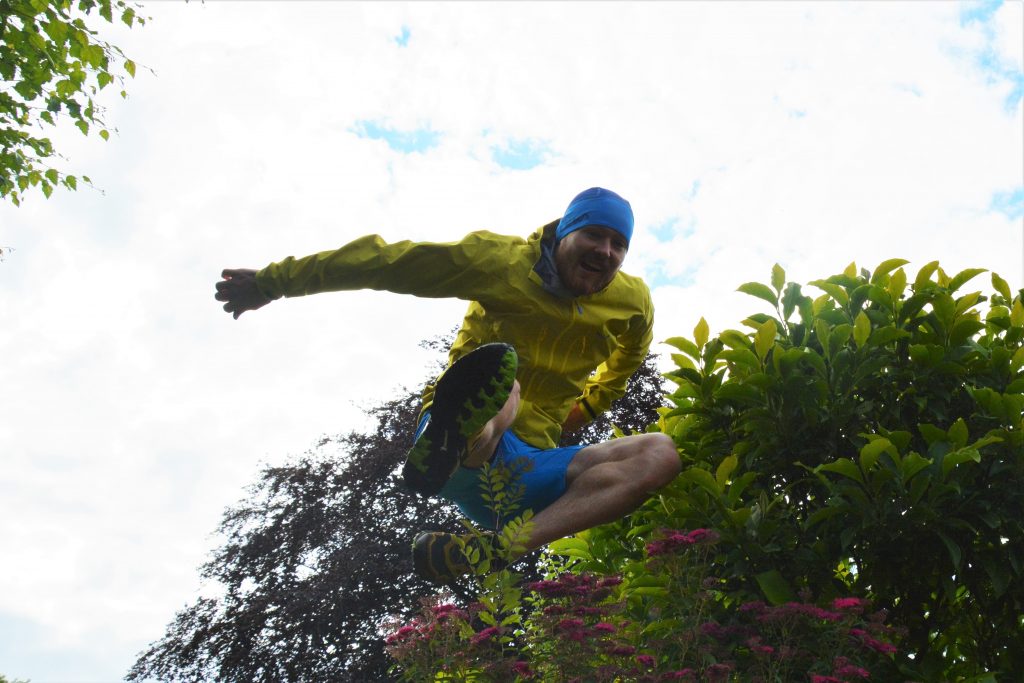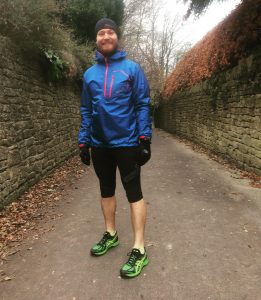Run Scrambling
Sim on how a scramble can turn a run in the mountains into a exhilarating…
Running demands a lot from a waterproof jacket, including great fit, useful features, low weight and packability. But with so many on the market how do you choose the right one for you? Read on for our top tips.

Salewa Pedroc Gore Tex Active Jacket
The first thing to consider when choosing a jacket is how you’ll use it. If it’s for racing then you’ll want it as light and packable as possible. If you’re after something that will work for run-commuting and/or on the bike then look for durability and comfort under a pack, as well as a dropped tail to protect from muddy splashes. Finally, if you’re after one jacket that will work for walking and general rainy day wear as well as for running you’ll want to prioritise durability and comfort. These factors, along with your budget, will determine the type of jacket you go for, but there are still hundreds to choose from. Here’s what you need to know:
Fabrics
During hard exercise your body generates heat and moisture. Normally, breathable fabrics allow air to circulate, keeping you cool and dry. By their nature waterproof fabrics aren’t particularly breathable, so unless the jacket’s well-designed you’ll end up hot and sweaty. Most waterproof fabrics used in running jackets claim to be breathable to some degree; fabrics like Gore Tex, Event, Polartec NeoShell and Pertex Shield work similarly well and often seem to work better than the cheaper own brand fabrics. In practice we find that the cut and features of a jacket make the most difference to its breathability.
Basic waterproof jackets use a 2-layer construction combining a polyester or nylon face fabric and a polyurethane (PU) backing; waterproof but sweaty. Better quality running jackets are normally constructed using either a 2.5- or 3-layer system, with a protective polyester or nylon face fabric; a waterproof membrane (usually ePTFE); and a backing mesh (2.5-layer) or fabric (3-layer) for comfort. Recently a couple of companies have introduced a 2-layer fabric which is just a membrane and a backing fabric, such as Gore’s new One Active Run Jacket. This is brilliantly light and comfortable but you may sacrifice some durability. In general, the more expensive the jacket, the better quality the fabrics used will be. Another important point to be aware of is the Rustle Factor. Noisy fabrics can wear you down when you’re running in them for any length of time, so keep an ear out when you’re trying them on.

Ultimate Direction Ultra Jacket on test
To stay comfortable and condensation-free while working hard you need to be able to vent your jacket. The most simple vent is through the main zip and some jackets like the Salomon Bonatti WP Jacket have a popper to allow the zip to be undone without the jacket flapping. You can also vent by rolling up the sleeves and exposing the forearms, but not all jackets are cut to allow this so try it when you are in the shop. Some jacket pockets are lined with mesh for additional venting, but these can let water in too. Some of the best running-specific jackets like the Arc’teryx Norvan Jacket and the Ultimate Direction Ultra Jacket now have ventilation built into them with carefully positioned and covered vents allowing moisture to escape without the rain getting in – look for these in the back, under the arms and in the hood.
Fit
A running jacket needs to be a slimmer cut than a walking jacket so it’s not flappy or restrictive. Sleeves should be long enough to cover your wrists and articulated so that your arms can swing comfortably and without the body of the jacket moving about. The jacket needs to be short enough at the front so it doesn’t hinder leg movement, especially noticeable when climbing steep hills. The back of the jacket is often longer than the front to offer a bit more protection, and a dropped tail will also help stop the jacket riding up when wearing a rucksack. Finally ,the hood needs to be well-fitted and snug; it should turn with the head and shouldn’t lift the fabric at the shoulders when it’s up. How well the jacket fits depends on your body shape and size so with the above points in mind it’s best to try a few different brands and models on.

Inov-8 AT/C Stormshell HZ Jacket
Features
Aside from vents, look for features that suit how you’ll use the jacket. A zipped pocket or two is useful for stashing essentials, however if you’re going to be running with a pack check they’re not covered by its straps. Adjustment on the cuff and hem can be useful but if the fit is good it may be unnecessary. Adjustment in the hood is very useful though, especially if you plan to use the jacket in really bad weather. A wired peak on the hood also helps keep the rain out of your eyes and is therefore more comfortable. Reflective detail is an important addition if you’re running on roads in poor light.
You can either opt for a full zip or an over-the-head smock style like the Montane Minimus Smock and the Inov-8 AT/C Stormshell HZ. A full zip is easier to put on and take off and can be completely undone for maximum ventilation but this can get flappy. A smock has the advantage of lighter weight and greater durability (shorter, stronger zip and fewer seams) it is also more protective because zips aren’t fully waterproof, but it can be annoying to have to take a wet jacket off over your head.
Overall, a good waterproof jacket will make running in bad weather a more pleasant and – particularly if you’re heading out into the hills – safer experience. If you’re after a great selection of jackets from lots of different brands to help with your choice, check out our review in the Feb/March 2017 issue of Trail Running magazine.
As always we would love to hear your comments or suggestions, email us or contact us through social media.